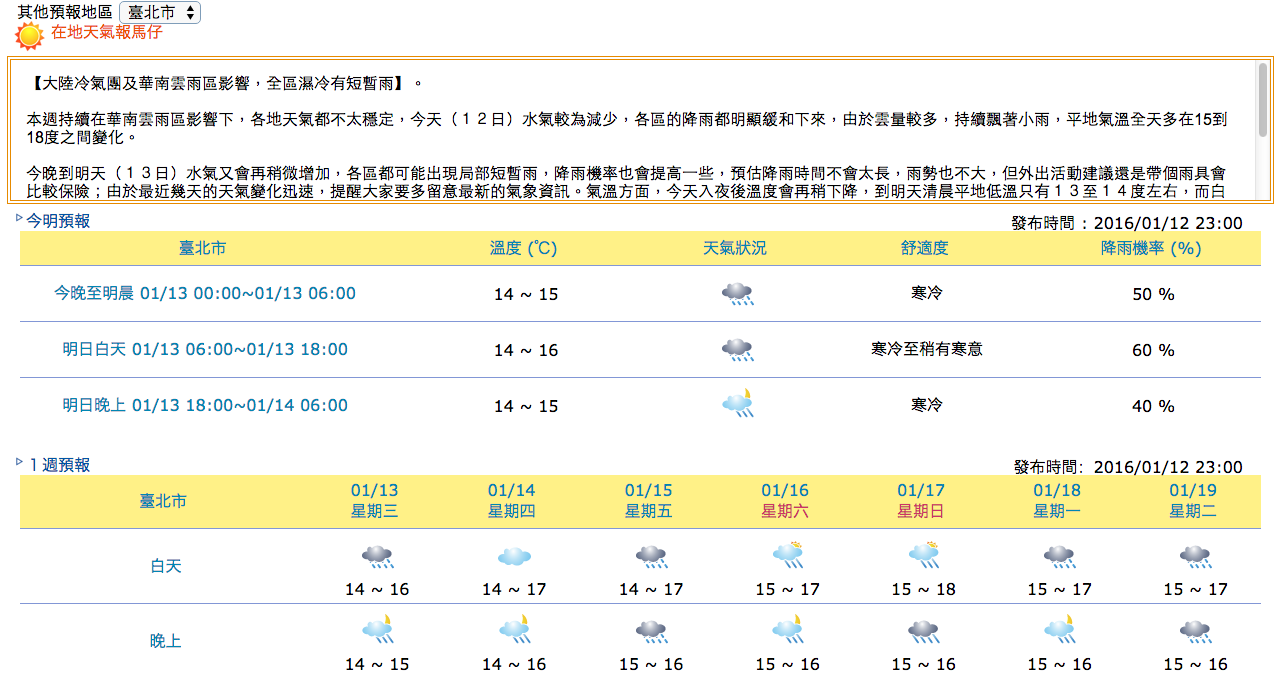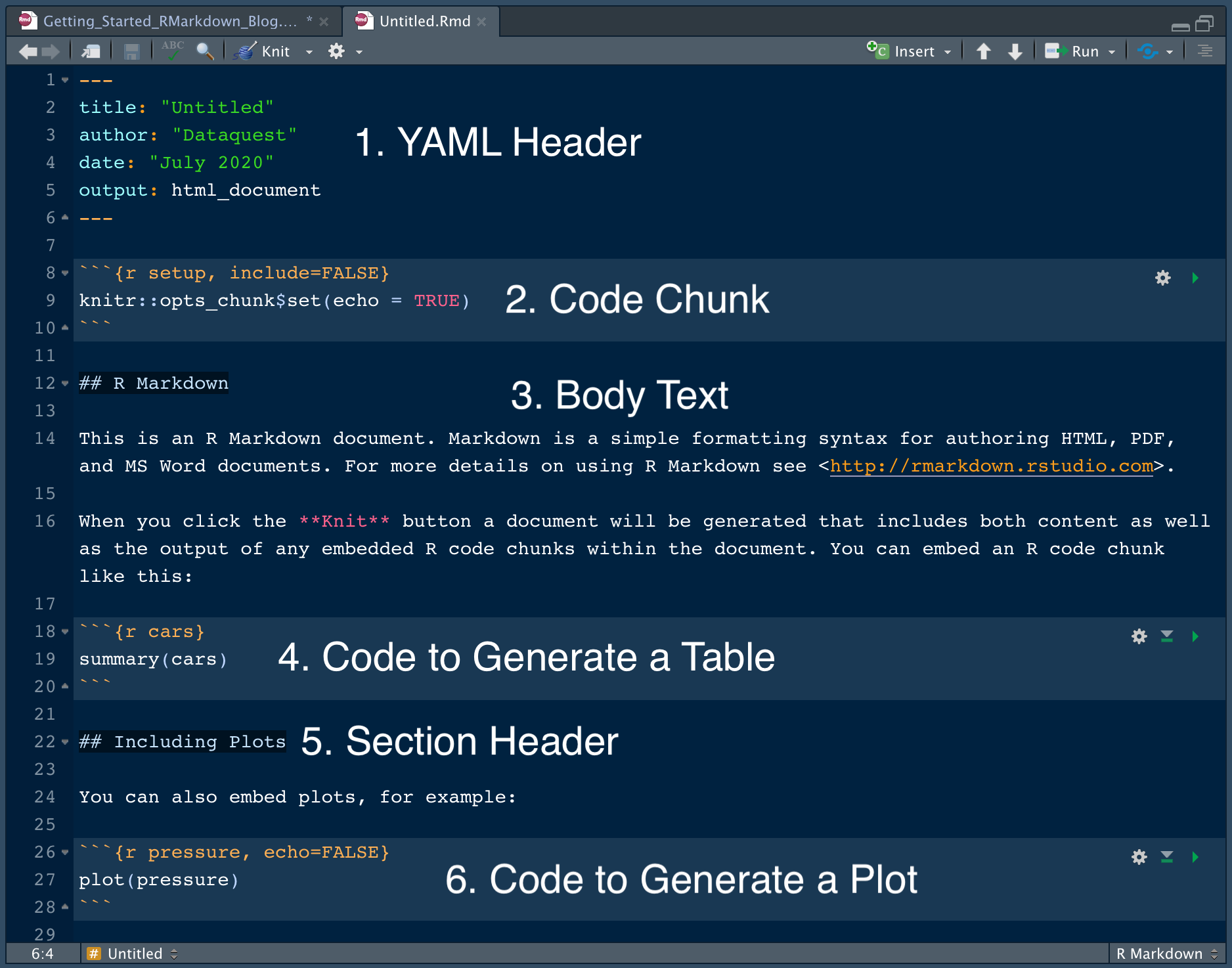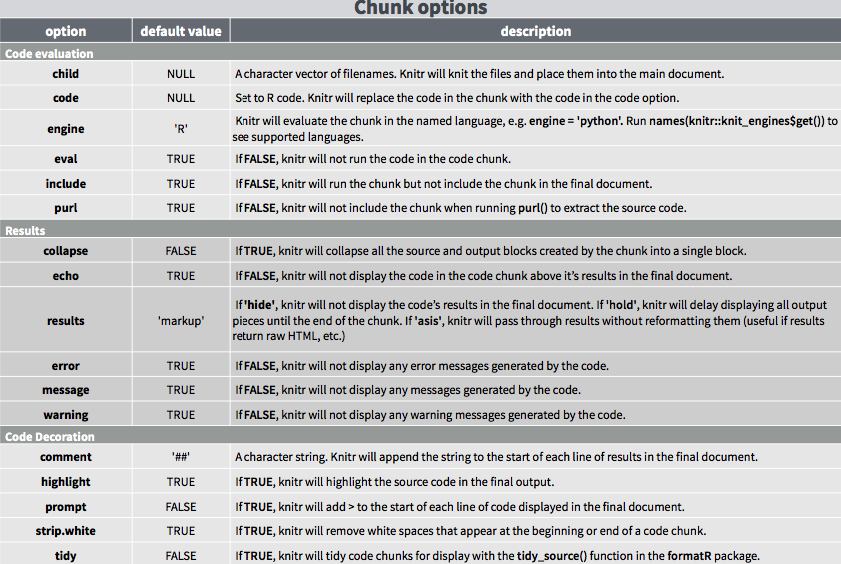


The xtable() function in this package attractively formats data frames and matrices to include in reports.
#R MARKDOWN CHUNK OPTIONS INSTALL#
Install MacTeX for Macs ( tug.org/mactex), MiKTeX (for Windows, and TeX Live for Linux (Alternatively, you can install TinyTeX from.
#R MARKDOWN CHUNK OPTIONS PDF#
If you want to create PDF documents, install a LaTeX compiler. When you render an R Markdown file, it will appear, by default, as an HTML document in Viewer window of R Studio. If you are using R Studio, you can skip the previous step because you already have the necessary packages ( R Markdown and Pandoc) installed in R Studio. It converts files from one markup format to another.
#R MARKDOWN CHUNK OPTIONS MAC OS#
Pandoc is a free application available for Windows, Mac OS X, and Linux. This will install several other packages including knitr that you will need for rendering your R Markdown file. You will be required to turn in your work for this course in R Markdown (homeworks, paper replications, term project, etc). After reading this document, you should be able to write nicely formatted reports. The goal of this document is to explain the most essential features of R Markdown using a template approach. R Markdown also lets you include Latex math, hyperlinks and images. Moreover, these reports are dynamic in the sense that changing the data and reprocessing the file will result in a new report with updated output. R Markdown allows you write reports that include both R codes and the output generated. Through R Markdown, R offers a much better solution to communicating your results. To report the findings of your analysis, typically you would copy-paste the results from R console into Latex (or Word) and, if necessary, you would attach the R codes to the document. With R Markdown you can make your analysis reproducible and conveniently communicate your results with other people.


13.3 Conditional Statements and Control Flows.12.6 Modifying the appearance of ggplot2 graphs.Datasets and Packages Used in this Chapter.10.3 Regression Diagnostics with Car package.10 Multivariate Regression and Hypothesis Testing.9.3 Simple Regression: using the lm Function.7.2 Descriptive Statistics: Categorical Data.7.1 Descriptive Statistics: Numeric Data.7 Summarizing Data: Descriptive Statistics.5.1 Attaching Names to the Elements of an Object.


 0 kommentar(er)
0 kommentar(er)
